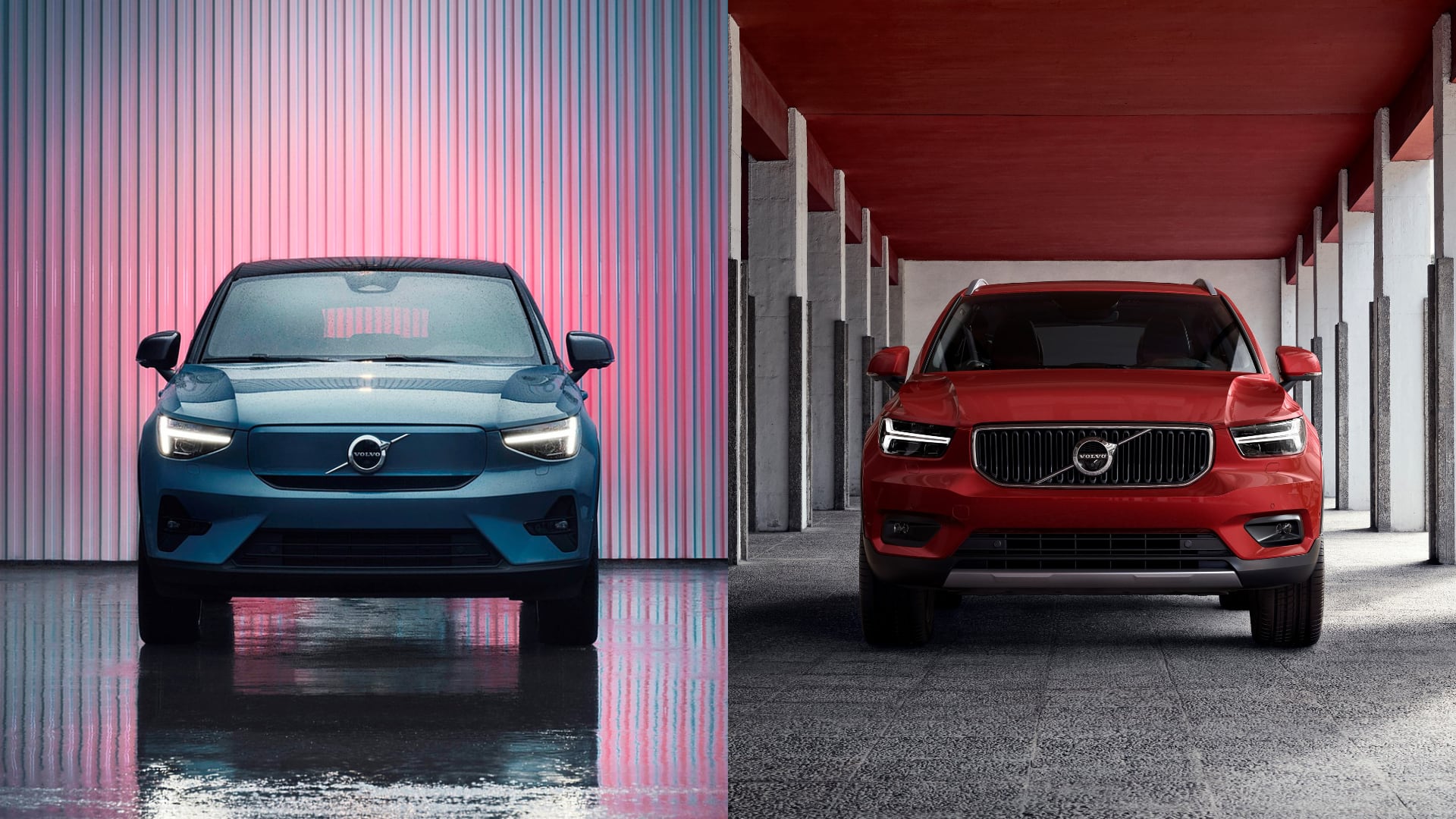Many people are now considering making the big switch to an all-electric vehicle. As a popular brand in the luxury vehicle market, especially for those seeking family cars, Swedish automaker Volvo is quickly becoming a key player in the EV sector.
Many of their models now offer either hybrid or battery electric vehicle (BEV) options. Two of their pure electric BEV SUVs options include the Volvo C40 Recharge and the Volvo XC40 Recharge. With the only difference in the names being the letter ‘X’, what is the real difference between these two models? Let’s take a closer look.
Quick Summary
The Volvo C40 is a new addition to Volvo’s SUV range, whereas the XC40 has been around as Volvo’s smallest SUV since 2017. However, the C40 is actually just a coupe-like XC40 with a chopped-off roof and sleeker design, with no real differences under the hood. Therefore, the more expensive C40 offers buyers more style and uniqueness, at the cost of practicality.
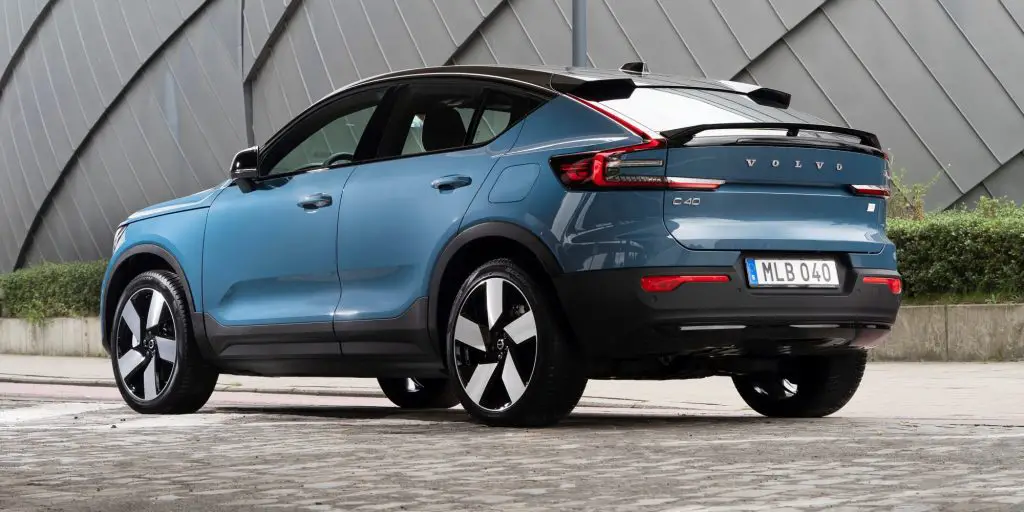
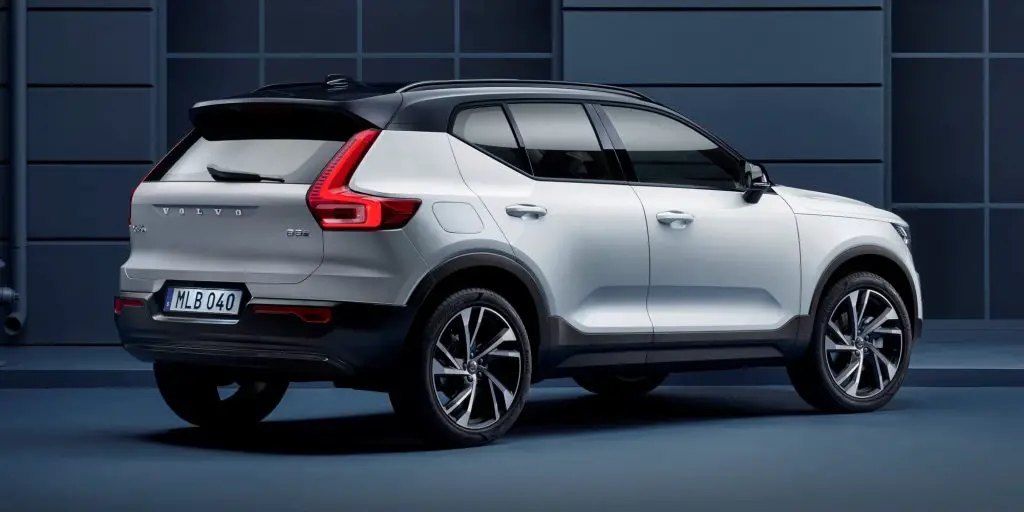
Pricing
Both of these models are priced north of $55,000 before the application of any rebates or other government incentives. The Volvo C40 Recharge starts at $58,750, while the XC40 starts at $55,300.
The Volvo C40 is a new addition in 2022, but one might still think the pricing difference seems odd when you consider that these 2 Volvo models share a lot of their mechanical infrastructure and even interior design traits.
Exterior
Both of these are marketed as city-friendly compact electric SUVs, but there are some noticeable differences, especially in the exterior design. The main distinction is the body shape, especially at the rear of the car. The C40 features a prominent, sleek and sporty roof, not unlike the appearance of a sportback or coupe. This is already a popular trend among German manufacturers like Audi and Mercedes-Benz who have released sportback versions of their SUVs in the past few years.
The XC40 Recharge is a lot boxier by comparison and is more reminiscent of what people associate with the traditional or typical Volvo design. The front end of both C40 and XC40 features the same LED light signature and front grille, but the XC40 has a more square profile with bolder, stronger lines.
Interior
On the inside, the two are essentially mirror images of each other. They both feature a high and commanding seating position, ample storage, a large sunroof, and nice high-end finishes to create a premium feel. Those who are concerned about leather in the car will be pleased to know that the C40 is completely leather-free, which according to Volvo is the first time they’ve released a model totally leather-free as standard.
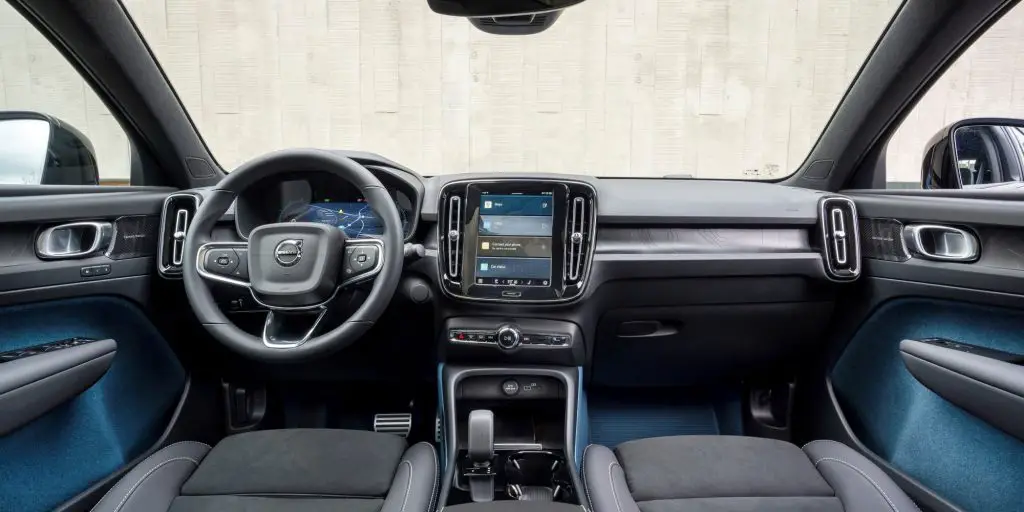
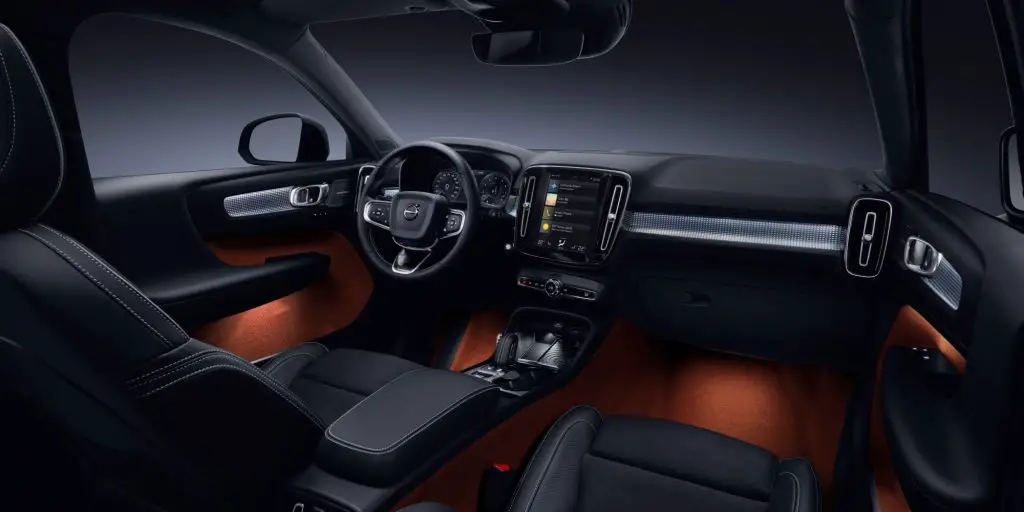
Some unique interior styling points in the C40 include the backlit trim panels on the dashboard. A unique feature of the XC40 is a significantly better cargo capacity, which we’ll discuss more further below.
Performance
Both the C40 and XC40 Recharge are electric SUVs, so there’s no engine displacement or cylinder count to take note of. Both are fitted with dual electric motors, one in front and one in the rear. This means both of them operate with full-time all-wheel drive as standard. The engine outputs 402 horsepower on both models, but in speed tests from 0 to 60-mph, the XC40 edges out the C40, achieving 4.3 seconds compared to the latter’s 4.7 seconds. This is somewhat surprising, as the better aerodynamics of the C40 should make it faster than the boxy XC40. Nevertheless, going from 0-60 mph in under 5 seconds is still remarkable for an SUV.
Both models handle well on the road, but there are some added faults for the C40, namely that the sportback/coupe design at the rear end may look the part for many people, but it does directly impact visibility. Users have reported that there are greater blind spots in the C40 thanks to its sportier design. In addition, its handling isn’t quite as crisp or sharp as the XC40.
The good news is that both offer one-pedal driving, which makes driving in city traffic even more comfortable as regenerative braking takes over the work of your other foot.
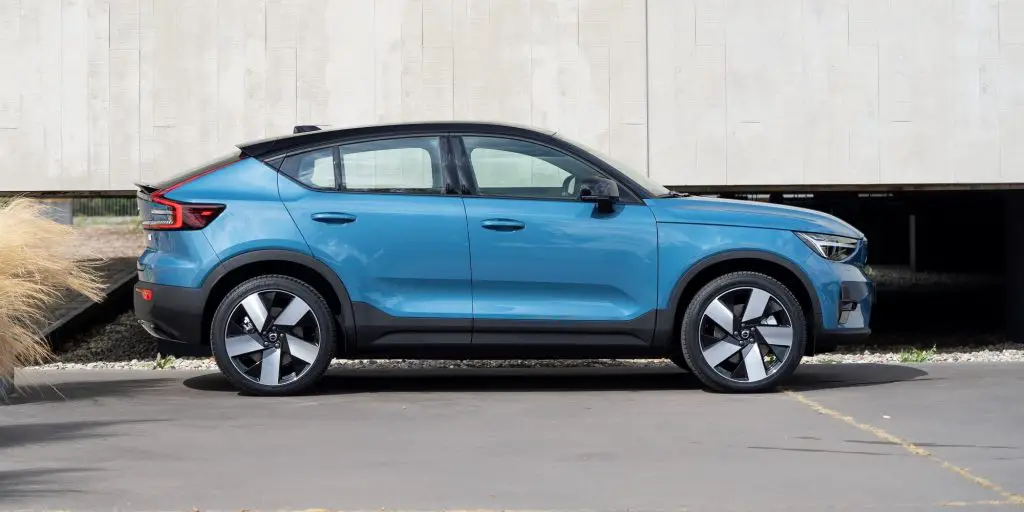
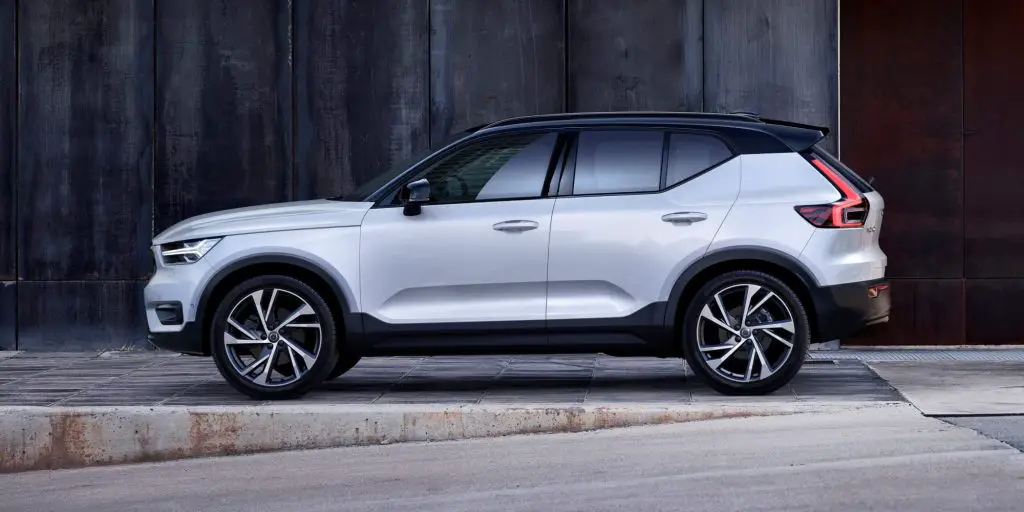
Practicality
Keep in mind that these two Volvo cars are essentially the same car, but the C40 has a lower ride height and sloping room. So from a practical point of view, the C40 just isn’t as good. For passengers, the difference is minor, with rear seat passengers losing out on some headroom.
But when we consider the maximum cargo capacity of each Volvo model, the sportback design of the C40 gives it a distinct disadvantage in this arena. The C40 Recharge maxes out at 48.7 cubic feet, compared to 57.5 cubic feet on the XC40 Recharge. Both can tow up to 2,000-lbs.
Driving Range and Charging Times
Buyers of electric vehicles are uniquely concerned about the range of the car, with so-called ‘range anxiety’ being a big obstacle for EV adoption. The Volvo C40 offers a single-charge range of up to 200+ miles according to Volvo’s own website, but by other reports, it can get up to about 225 miles depending on driving style. The Volvo XC40 offers a very similar 223 miles, but this is not surprising since both feature the exact same 75kWh battery pack as the main power source.
The electric fuel economy figures are also quite evenly matched. The C40 offers up to 85-MPGe in the city and 72-MPGe on the highway according to unofficial tests, but the EPA is yet to deliver official ratings on the C40. The XC40 is rated at 92-MPGe in the city, and 79-MPGe on the highway.
For charging times, using a DC fast charger can add 80 percent of battery life to the C40 in just 40 minutes. The XC40 enjoys the same rate of charging when it comes to DC fast charging. If charging using a home charger, then speed will depend on the wallbox and output. On average, the battery could easily be charged to full overnight, or back to around 80 percent as most people do. In all it should take between 5-8 hours depending on charging output and residual percentage when starting.
Technology & Features
Both are quite evenly matched in the technology arena. This is one area of interior design where the two models are very similar. Neither of them uses the outgoing Volvo Sensus Connect infotainment system, but instead makes use of new systems designed by Google. The on-screen buttons on both can be fiddly while driving, which is a sore point, but the system generally is a huge improvement, and responds to the “hey Google” voice command.
Both are also equipped with a 12.3-inch digital instrument cluster in the driver’s cockpit, which is customizable. It makes for a very sharp and clear transmission of key data, navigation, and such.
Safety
Both the XC40 and C40 Recharge models come with a similar set of ADAS features, including adaptive cruise control, lane-keeping assist, automatic emergency braking, and blind-spot monitoring. The safety features are offered as standard in both these models.
Key Rivals
The Volvo C40 and Volvo XC40 are fairly unique, in that they are two of the very few fully-electric subcompact luxury SUVs. German competitors Audi and BMW have been slow to electrify their SUV range, and only offer the mid-size BMW iX and compact Audi Q4 e-tron.
Other popular electric SUVs include the Tesla Model Y and Volkswagen ID.4, although again, these both belong to a bigger size class than the Volvo C40 and XC40.
Of course, if we consider internal combustion engine cars as rivals, then we would have to include the likes of the BMW X1 and X2.
Verdict
Both the C40 and XC40 offer many of the same features, and so the main difference between the two models is found in their appearance. Fans of the more traditional style of the Volvo with its straight edges and commanding presence will prefer the XC40 Recharge. Those who want the sleeker, sportier version, despite some practical drawbacks that it brings, will prefer the C40 Recharge.
In terms of range, charging, features, and technology, the two are quite evenly matched, with perhaps the C40 gaining a slight advantage being the real “new kid on the block” and so everything in the model feels fresh and new compared to the XC40 which merely feels “updated.”
Being subcompact SUVs, some buyers may desire a slightly bigger Volvo car. That car would be the Volvo XC60, but the caveat is that it is only available as a plug-in hybrid, and not as a fully electric vehicle. You can read our Volvo XC40 vs XC60 comparison to learn more.
